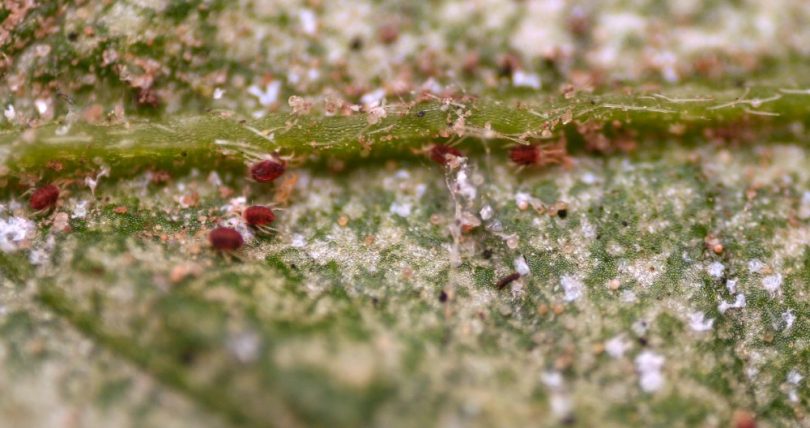There are many threats to a beautiful cannabis crop, but none are as insidious as the spider mite, a ubiquitous pest throughout the growing world. Fortunately, there are ways to prevent or treat infestations. However, some of the methods used to stop these pests are questionable at best.
Spider mites are tiny arachnids that wreak havoc on cannabis plants. If left untreated, they will multiply while casting webs throughout the crop. They feed on the nutrients that the plants need to photosynthesize. As the colony grows, it will eventually suck the life out of the farm.
They’re barely visible, individually, to the human eye. But when they’re multiplying, they, their eggs, and their webs are more than noticeable. Their presence is also seen in the reaction the plants have to their feasting. Tiny, brown, nutrient-void spots begin to appear on the leaves where the pests feed.
Prevention is the most effective “cure” for these pests, and it starts with a well-controlled grow area, indoors or outdoors. A clean growing area should not have spider mites unless they are introduced into the space. They are often brought in by infected clones as well as by contaminated tools, clothing, and even air. Controlling the comings and goings to the grow spot will help keep the mites out, especially indoors and in greenhouses, where the grow space is much more controllable.
The use of spider mite predators can also be effective against the bugs. Predators include predatory mites, such as Phytoseiulus persimilis and Mesoseiulus longipes. Lady bugs are also used.
When an infestation does occur, there are a number of chemical treatments that growers may resort too. Some of them are safe for both the plant and humans, and others are highly toxic. The safe options include some specific essential oils, neem oil, and insecticidal soaps.
Most of the poisonous choices are known as miticides and are very effective against spider mites. However, they are of such a toxic nature that the Environmental Protection Agency (EPA) only allows them to be used on ornamental plants. That said, there are growers, mainly black market, who use these miticides, which would otherwise appear on any mandated lab testing used in legal markets in the US.
When using the safer treatments, it’s important to use more than one product and rotate between them. This prevents the mites from building up an immunity to one product. It also helps the grower target every phase of the spider mite life cycle, from egg to adult.
The lucky grower never sees hide nor hair of a spider mite. However, most who tend cannabis crops will experience them and should know how to combat them effectively and safely.
Image Source: Toby Young, Wikimedia Commons, CC BY-SA 4.0








